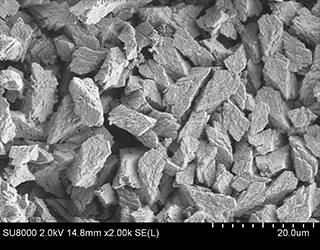
The growing demand for climate-neutral building materials requires new manufacturing processes. The DeCaBio project is researching innovative electron beam-assisted processes for increased biogenic limestone synthesis to support the decarbonization of the cement industry.
Due to growing demands for sustainable and resource-efficient processes to achieve climate targets, the need for bio-based substitution processes is also increasing in the construction industry. Cement, the world's most widely produced material, is indispensable as a binding agent, but its current production causes high greenhouse gas emissions. The decarbonization of the cement industry is therefore a promising strategy that will enable the development of low-carbon bio-based building materials in the future.
Microorganisms are everywhere and have been influencing the Earth's environment for over 3.5 billion years. In addition to decomposition and degradation processes, specific microorganisms are also capable of binding carbon dioxide from the atmosphere through photosynthesis and subsequently converting it into stable limestone deposits. The microbial synthesis of biogenic limestone has many advantages and the potential to significantly reduce environmental impact compared to conventional manufacturing processes when integrated into industrial processes.
This is where the internal bilateral Fraunhofer project DeCaBio comes in, which is being carried out in cooperation between the Biocompatible Materials group at Fraunhofer FEP and the Mineral Materials and Building Materials Recycling department at Fraunhofer IBP. In order to further reduce the carbon footprint of cement formulations in the future and gradually replace fossil limestone as a primary resource, the DeCaBio project focuses on increasing the biogenic production of climate-positive limestone with the help of phototrophic microorganisms, cyanobacteria. The project is investigating the dose-dependent biopositive effect of low-energy, non-thermal electron beam processes on the metabolic processes of phototrophic microorganisms in order to improve the effectiveness and economic efficiency of limestone synthesis. The microbial production process involves several reaction steps and usually occurs when cyanobacteria grow in a suitable environment with excess calcium ions (Ca²+) and CO2 (carbon dioxide). The biogenic limestone obtained can then be used as a filler for concrete or as a cement grinding agent for composite cements. To ensure a high level of sustainability in terms of process circularity, construction waste fractions and food waste are to be reused or recycled as calcium sources through upcycling in order to establish additional resource-saving recycling processes.
 Fraunhofer Institute for Electron Beam
Fraunhofer Institute for Electron Beam